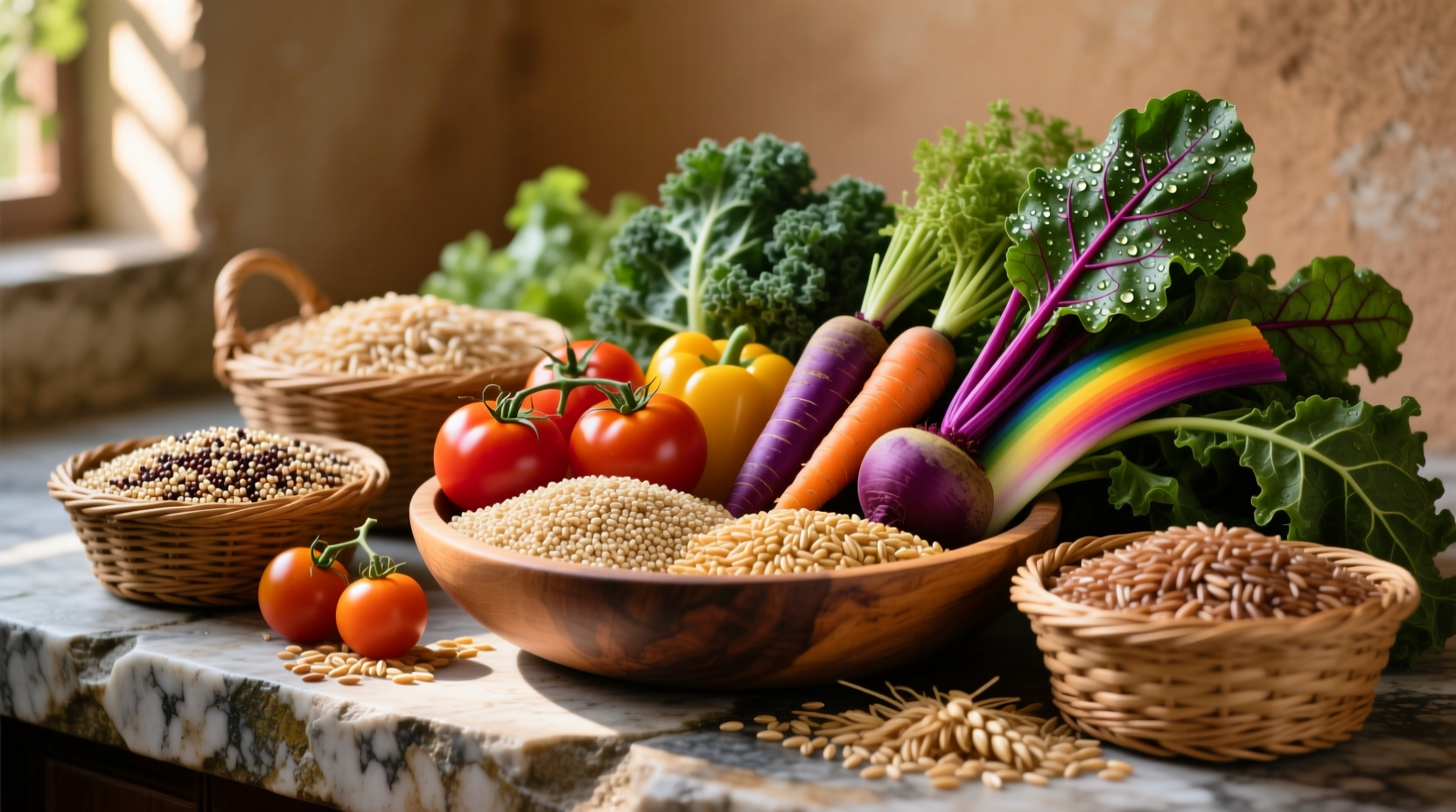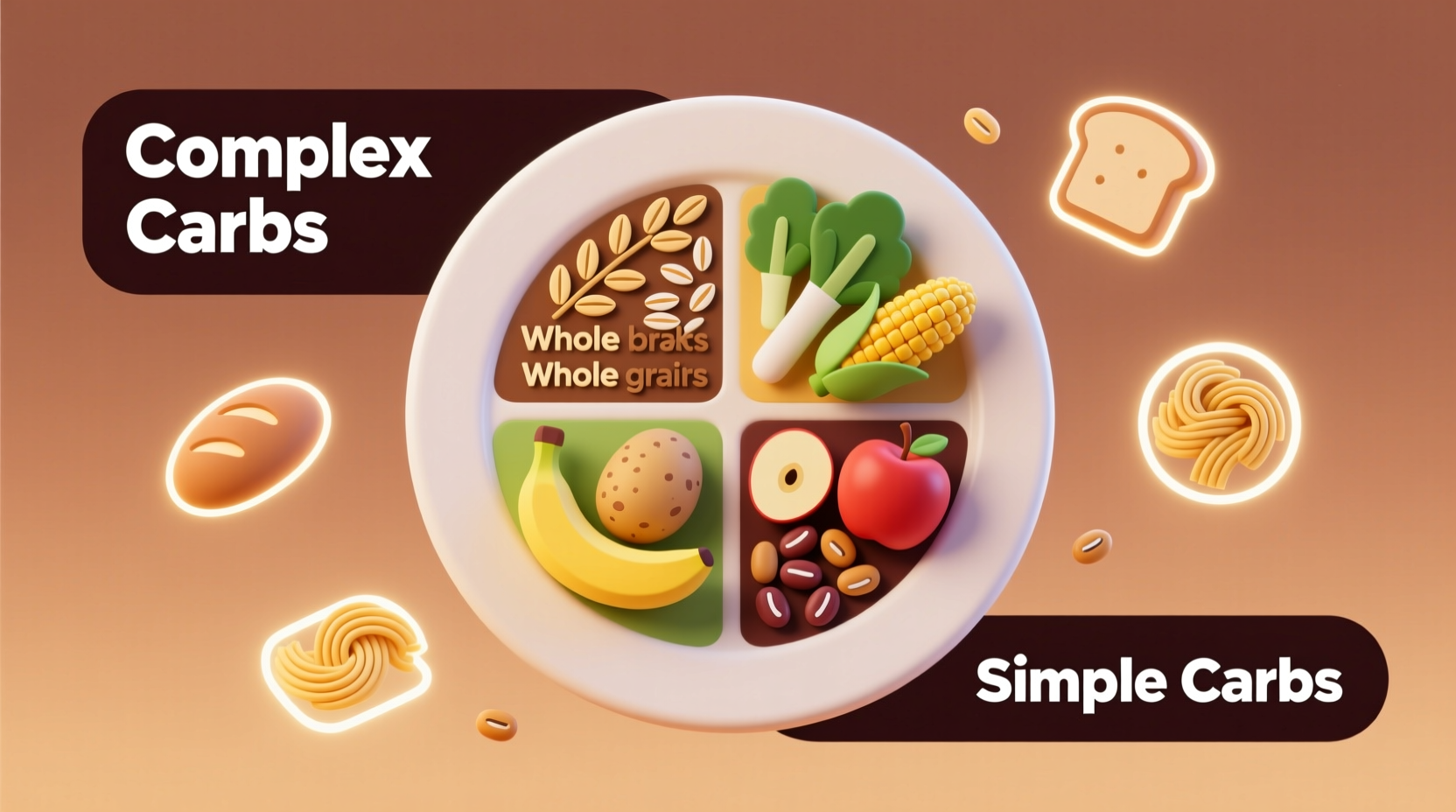Understanding Carbohydrates: Your Body's Primary Energy Source
When you search what are carbs food, you're likely looking for practical information about which foods contain carbohydrates and how they affect your health. Carbohydrates serve as your body's preferred energy source, particularly for brain function and physical activity. Unlike proteins and fats, carbs break down quickly into glucose—the simplest form of sugar—which your cells use for immediate energy.
Types of Carbohydrates in Food
Not all carbs are created equal. Understanding the difference between simple and complex carbohydrates helps you make better food choices:
| Type | Structure | Digestion Speed | Common Food Examples | Nutritional Value |
|---|---|---|---|---|
| Simple Carbohydrates | 1-2 sugar molecules | Fast (15-30 minutes) | Fruits, milk, honey, table sugar | Varies: natural sources contain vitamins; refined sugars offer "empty" calories |
| Complex Carbohydrates | Long chains of sugar molecules | Slow (2+ hours) | Whole grains, legumes, vegetables, oats | High in fiber, vitamins, and minerals; promote satiety |
Everyday Foods Containing Carbohydrates
Carbohydrates appear in nearly all food groups, but in varying amounts and forms. Here's what you need to know about common carb sources:
Grains and Grain Products
Grains form the foundation of many diets worldwide. Whole grains like brown rice, quinoa, and whole wheat bread contain complex carbohydrates along with fiber and nutrients. Refined grains like white rice and white bread have had their fiber-rich outer layers removed, resulting in faster digestion and less nutritional value. According to the USDA Dietary Guidelines, making at least half your grains whole can improve overall diet quality.
Fruits and Vegetables
All fruits contain carbohydrates primarily in the form of natural sugars like fructose. Berries, apples, and citrus fruits offer carbs with high fiber content and essential vitamins. Starchy vegetables like potatoes, corn, and peas contain more carbohydrates than non-starchy vegetables like broccoli, spinach, and peppers. The Harvard T.H. Chan School of Public Health recommends filling half your plate with vegetables and fruits for optimal nutrition.
Legumes and Dairy
Beans, lentils, and chickpeas provide complex carbohydrates along with plant-based protein and fiber. Dairy products like milk and yogurt contain lactose (a natural sugar), making them carbohydrate sources as well. Greek yogurt contains fewer carbs than regular yogurt due to the straining process that removes some lactose.

Carbohydrate Consumption Through History
Human consumption of carbohydrates has evolved significantly over time:
- Prehistoric Era: Early humans consumed carbohydrates primarily from wild fruits, roots, and tubers
- 10,000 BCE: Agricultural revolution introduced cultivated grains like wheat and barley
- 15th Century: Global exploration brought new carbohydrate sources like potatoes and corn to Europe
- Industrial Revolution: Flour milling technology led to refined white flour becoming widely available
- 20th Century: Rise of processed foods increased consumption of refined carbohydrates and added sugars
- 21st Century: Growing awareness of whole carbohydrates and low-glycemic eating patterns
Context Matters: When Carbs Serve Different Needs
Carbohydrate requirements vary based on individual circumstances. Understanding these context boundaries helps you apply this information to your specific situation:
- Athletes: Require higher carb intake (5-12g per kg body weight) to fuel performance and recovery
- Sedentary individuals: Benefit from moderate carb intake focused on high-fiber, nutrient-dense sources
- People with diabetes: Need to monitor carb quantity and quality to manage blood sugar levels
- Weight management: Focusing on complex carbs with high fiber content promotes satiety and sustainable eating patterns
Research from the American Heart Association indicates that replacing refined carbohydrates with whole grains can reduce the risk of heart disease by up to 20%. This demonstrates how the quality of carbohydrate sources significantly impacts health outcomes.
Practical Tips for Choosing Healthy Carbohydrates
Implementing what you've learned about what are carbs food requires practical application. Here are actionable strategies:
- Read food labels: Look for products with at least 3g of fiber per serving and minimal added sugars
- Choose whole grains: Opt for brown rice instead of white, whole wheat pasta instead of regular
- Pair carbs with protein: Combine an apple with almond butter to slow digestion and stabilize blood sugar
- Watch portion sizes: A standard serving of cooked grains is about 1/2 cup (the size of a tennis ball)
- Focus on fiber: Aim for 25-38g of fiber daily from food sources rather than supplements
When evaluating carbohydrate sources, consider both the nutritional profile and how the food makes you feel. High-quality carbs should provide sustained energy without causing energy crashes. As Antonio Rodriguez explains from his culinary chemistry perspective, "The way carbohydrates interact with other nutrients in your meal significantly impacts how your body processes them. Combining carbs with healthy fats and proteins creates a more balanced metabolic response. "











 浙公网安备
33010002000092号
浙公网安备
33010002000092号 浙B2-20120091-4
浙B2-20120091-4